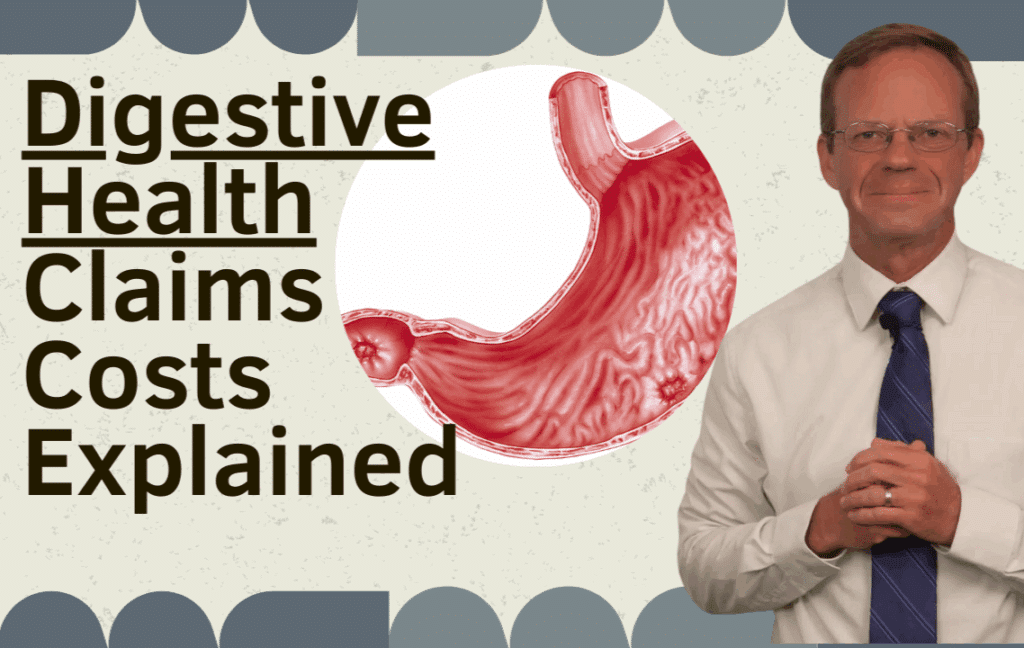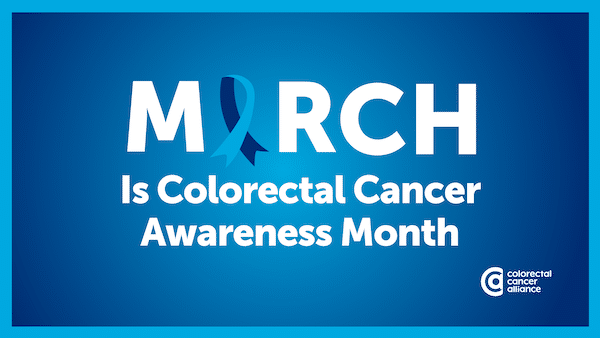Medically reviewed by Jenny Blair, MD
Gastrointestinal diseases like inflammatory bowel disease (IBD), gastroesophageal reflux disease (GERD), and irritable bowel syndrome (IBS) are more prevalent—and costlier—than many employers realize. Up to 70 million Americans are affected by gastrointestinal (GI) diseases each year—twice as many people as those living with diabetes (34.2 million).[1],[2] Overall direct healthcare costs for GI diseases are estimated to be $136 billion each year in the U.S., more than heart disease ($113bn) and mental health disorders ($99bn) [Figure 1.][3] However, GI conditions are often overlooked by employers as they consider their benefit offerings, even though a large proportion of their workforce is likely living and struggling with these conditions.
Figure 1.

The rising direct cost of GI conditions
Irritable bowel syndrome, characterized by symptoms like recurring abdominal pain, constipation and diarrhea, affects as many as 15% of people worldwide[4]—though only 5 to 7% of people receive a diagnosis.[5] While this low diagnosis rate limits the value of cost estimates, the direct medical costs of IBS, excluding prescriptions and over-the-counter medicines, have been estimated to be $10 billion (or nearly $14 billion in today’s dollars) in the US.[6] Medication spend is another cost driver as IBS patients receive an average of 3 to 7 medications annually.[7] That’s 2 to 3 more prescriptions than a person without IBS would receive over a year.
Another important financial consideration for IBS is out-of-pocket (OOP) spend incurred by patients on over-the-counter medications, probiotics and functional medicine providers. One survey of about 600 people with IBS found that patients spent an average of $288 (2020 equivalent: $693) during a three-month period on over-the-counter and alternative therapies for IBS symptoms.[8] A 2007 study published in the journal Alimentary Pharmacology and Therapeutics looked at the OOP spend among people with IBS and found that individuals incurred an annual average of $406 OOP costs for the treatment of IBS symptoms.[9]
A significant driver of GI spend is inflammatory bowel disease (Crohn’s disease, ulcerative colitis and related forms of colitis), which affects 3 million American adults[10] and about 70,000 children.[11] In 2014, the total financial burden of IBD was estimated to range between $14.6 billion and $31.6 billion, annually.[12] Another study of 52,782 IBD patients showed direct medical costs of IBD to be $22,987 annually—three times higher than the direct cost of care for people without IBD.[13]
Working Americans are also up against another common chronic GI condition: GERD, commonly referred to as acid reflux. According to the National Institutes of Health, GERD affects about 20% of the US population.[14] However, GERD prevalence is likely underestimated, as many patients self-manage or don’t pursue treatment.[15] A 2007 study estimated that employees with GERD account for annual health benefit costs of $6,878 each ($8,664 in today’s dollars), which is $3,355 ($4,226 in 2020 dollars) more than their counterparts without GERD.[16]
In addition to costs that are directly attributable to GI care, these patients also experience a high rate of mental health conditions like anxiety and depression. One study showed that 25% to 30% of IBS patients suffer from depression or anxiety, a rate up to 6 times higher than the control population.[17] And with a growing body of evidence supporting the idea that the brain and gut influence each other’s functioning, the mental health costs related to GI conditions are likely to be significant.
All of these statistics underscore the high direct costs of GI conditions like IBD, IBS or GERD. However, they’re not the only costs employers and patients face.
The toll on productivity and other indirect costs
Indirect costs, which are largely incurred by an employer, include costs related to decreased work productivity, worker turnover, family medical leave, absenteeism and presenteeism. These conditions cause periods of intense discomfort, pain, constipation, diarrhea, nausea and other symptoms that can cause employees to miss days of work or struggle to maintain productivity when they are in pain or frequently need to use the restroom.[18] Due to stigma, these are not conditions that patients readily talk about, so many employer benefit leaders may not be aware of the prevalence and impact of these conditions, similar to the situation with mental health conditions until the past few years.
It’s estimated that the indirect costs of IBS are as high as $20 billion; however, this estimate from 2001 is based on IBS patients who sought out medical care.[19] The true costs could be significantly higher, as many IBS patients suffer without seeking care due to challenges with current care models that we’ll describe in an upcoming post.
Absenteeism and presenteeism—defined as missed days from work and productivity loss at work, respectively—among people with IBS is also higher when compared to the general population. One study that analyzed the 2015 IBS in America survey found that both students and employed workers report missed school or work and reduced productivity at work due to IBS symptoms.[20] Specifically, 1,885 students or employed workers with IBS said that symptoms impacted their productivity an average of 8.0 days over the course of the month; the same group also reportedly missed about 1.5 days of work or school because of IBS [Figure 2].[20] Another survey of workers in five European countries found that presenteeism affected about one-quarter of those with IBS, but only about 16% of those without IBS.[21]
GERD is another GI condition associated with high rates of presenteeism and absenteeism. One study published in the Journal of Occupational and Environmental Medicine looked at 11,653 employees with GERD and compared them with 255,616 employees without GERD from a database of US employees’ administrative health care and payroll data. Study authors found that employees with GERD had 41% more sick leave days, 59% more short-term disability days, 39% more long-term disability days, and 48% more workers’ compensation days than employees without GERD.[22] These findings highlight the impact GERD has on productivity in the workplace, and yet GERD remains an unseen, yet widespread, health issue.
Figure 2.

Other hidden factors driving costs
There are GI-specific cost drivers, including lengthy diagnostic processes and unnecessary or overused tests, that aren’t seen in other chronic conditions like diabetes. There unfortunately are not simple and cost-effective biomarkers for these GI conditions, which drives significant variation in the diagnostic process.
For example, GIs have differing beliefs around how to best diagnose IBS. Community providers often view it as a diagnosis of exclusion that requires ruling out other conditions via expensive testing. Experts, however, more often endorse a positive diagnosis pathway, which has been shown to be noninferior. These differing diagnostic approaches can greatly impact the patient experience and healthcare spending. A 2013 study published in the journal Clinical Gastroenterology and Hepatology put the cost of diagnosis by exclusion at $1,042.62, while the cost of a positive diagnosis path was $57.19 (in 2020 dollars).[23],[24] Yet a survey found that 72% of community gastroenterologists still believe IBS requires a diagnosis of exclusion; these physicians order 1.6 more diagnostic tests than their counterparts who use a positive diagnosis pathway.[25] Keep in mind, too: within the 2015 IBS in America survey, 1,962 patients reported that it took on average 4 years to receive an IBS diagnosis [Figure 3].[26]
Within the IBD community, it’s commonly known that the time to reach an IBD diagnosis is both lengthy and expensive, with nearly half of IBD patients spending more than 2 years trying to obtain a diagnosis.[27]
GERD is also impacted by “mismanaged” healthcare costs. Data shows that 10% to 40% of upper GI endoscopies, used for diagnosing, monitoring or treatment, do not conform to guidelines—further driving healthcare spending for employers and their workforces.[28]
GI diseases present unique challenges for employers looking to supply employees with high-quality benefits that provide a great experience at a predictable cost.
Figure 3.

New solutions are needed for GI conditions
People living with these prevalent GI conditions often struggle to determine the triggers of flares in their symptoms that cause the biggest negative impact on their health, quality of life and productivity. They need new solutions that understand the complexity of their situation, take the time to get to know them and develop and test personalized solutions to minimize the impact of their condition on their life. Many times the support people want and need does not seem available to them from today’s “sick care” approach to healthcare.
In our next post we will highlight what we’ve learned by interviewing and surveying thousands of patients living with IBD, IBS, GERD, SIBO and other prevalent GI conditions. We will discuss failure points in the current US healthcare model that leave these people feeling alone in their journey to get their disease under control, often turning to online communities for guidance, paying out of pocket for functional medicine providers, or just avoiding care altogether and trying to manage on their own in silence.
We will then lay out what we believe a new model of GI care looks like and how it addresses these unique challenges to get better outcomes with a 10-fold better patient experience while controlling costs for employers.
If you want to learn more about Oshi Health and our new model of GI care, please reach out!
References
[1] https://www.niddk.nih.gov/about-niddk/strategic-plans-reports/opportunities-challenges-digestive-diseases-research-recommendations-national-commission and https://www.ncbi.nlm.nih.gov/pmc/articles/PMC5787318/
[2] https://professional.diabetes.org/sites/professional.diabetes.org/files/media/sci_2020_diabetes_fast_facts_sheet_final.pdf
[3] https://www.jwatch.org/na47723/2018/10/23/burden-and-costs-gastrointestinal-disease-us
[4] https://www.aboutibs.org/facts-about-ibs/statistics
[5] https://gi.org/topics/irritable-bowel-syndrome/#v
[6] https://www.ncbi.nlm.nih.gov/pubmed/15298528
[7] https://www.ncbi.nlm.nih.gov/pmc/articles/PMC5598808/#bibr12-1756283X17718677″
[8] https://www.ajmc.com/journals/supplement/2005/2005-04-vol11-n1suppl/apr05-2021ps07-s16?p=1
[9] https://onlinelibrary.wiley.com/doi/full/10.1111/j.1365-2036.2007.03370.x
[10]https://www.cdc.gov/ibd/data-statistics.htm
[11] https://www.ncbi.nlm.nih.gov/pmc/articles/PMC4702263/
[12] https://www.ajmc.com/journals/supplement/2016/importance_of_selecting_appropriate_therapy_inflammatory_bowel_disease_managed_care_environment/importance_of_selecting_appropriate_therapy_inflammatory_bowel_disease_managed_care_environment_report_economic_implications_ibd
[13] https://academic.oup.com/ibdjournal/article/26/1/1/5490919
[14] https://www.niddk.nih.gov/health-information/digestive-diseases/acid-reflux-ger-gerd-adults/definition-facts
[15] https://www.ncbi.nlm.nih.gov/pmc/articles/PMC1936305/
[16] https://onlinelibrary.wiley.com/doi/pdf/10.1111/j.1365-2036.2007.03428.x
[17] https://www.jmcp.org/doi/full/10.18553/jmcp.2016.16138 and https://www.jmcp.org/doi/10.18553/jmcp.2014.20.4.382
[18] http://www.multivu.com/players/English/7634451-aga-ibs-in-america-survey/docs/survey-findings-pdf-635473172.pdf
[19] https://www.ajmc.com/journals/supplement/2005/2005-04-vol11-n1suppl/apr05-2021ps07-s16?p=1
[20] https://www.ncbi.nlm.nih.gov/pubmed/31419572
[21] https://allergan-web-cdn-prod.azureedge.net/allerganuk/allerganukzinc/media/allergan-uk/uk_global_ibs_impact_report.pdf
[22] https://www.ncbi.nlm.nih.gov/pubmed/18188078
[23] https://data.bls.gov/cgi-bin/cpicalc.pl?cost1=913.59&year1=201201&year2=202002
[24] https://www.cghjournal.org/article/S1542-3565(13)00096-7/fulltext
[25] https://www.ncbi.nlm.nih.gov/pmc/articles/PMC2887205/
[26]http://www.multivu.com/players/English/7634451-aga-ibs-in-america-survey/docs/survey-findings-pdf-635473172.pdf page 34
[27] https://academic.oup.com/ibdjournal/article-abstract/25/Supplement_1/S14/5308155?redirectedFrom=fulltext
[28] https://www.medicaleconomics.com/modern-medicine-feature-articles/treatment-gerd-evolving




